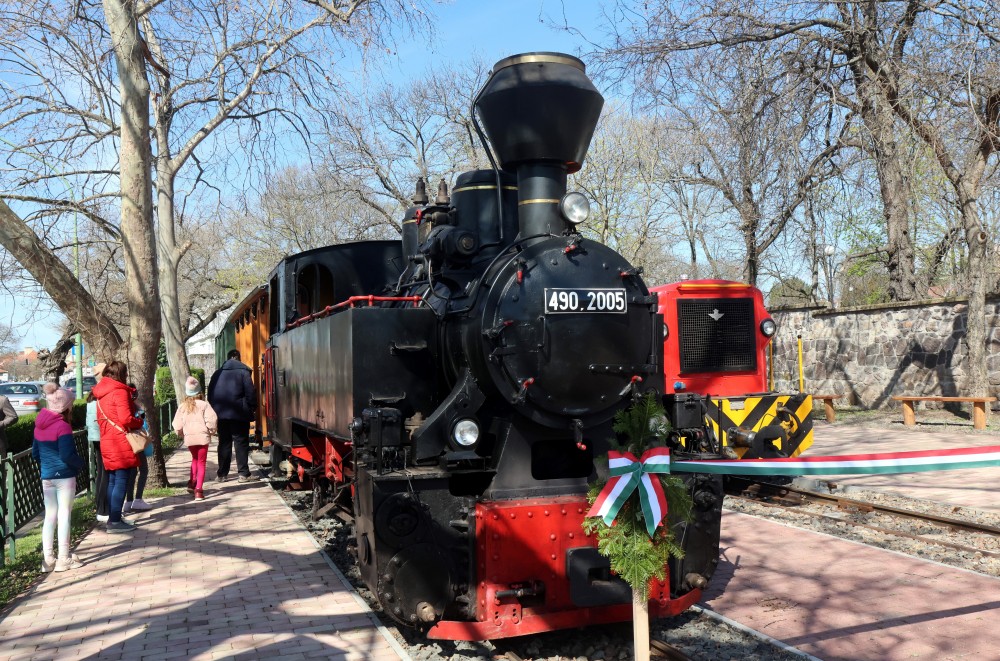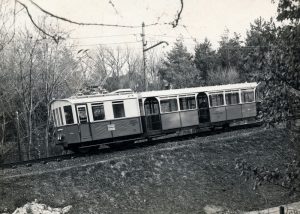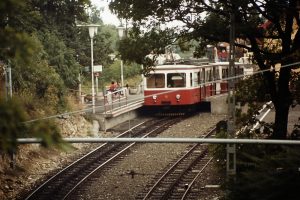
In the last 10 years, some HUF 42 billion has been invested in the development of the regional tourism infrastructure.Continue reading

150 years ago, on June 24, 1874, the first cogwheel train was put into operation in Budapest. The idea of the cogwheel railway on Sváb Hill was suggested by Count Ödön Széchenyi. The hill was a popular place for hiking and recreation for the city’s inhabitants, but until then it was mostly accessible on foot, Magyar Nemzet writes.
Cogwheel trains are used in high altitude mountainous areas, their locomotives have one or more driving gears connected to a special toothed rack rail. The first European cogwheel railway was designed and built by Niklaus Riggenbach between Vitznau and Rigi (Switzerland), and was inaugurated in 1871, the MTVA’s press archive reads.
The idea for the Budapest cogwheel was raised by Count Ödön Széchenyi after he became acquainted with Riggenbach’s work. The concession contract was signed with Riggenbach’s company on May 21, 1873, and the Swiss-born engineer Ferenc Cathry Szaléz was commissioned to build the track, that was completed in less than a year.
The world’s third Riggenbach railway with steam locomotives was put into service on June 24, 1874.
The railway was 2,883 meters in length with a difference in elevation of 264 meters between the two terminals. The trains left from the Ecce Homo meadow (now called Városmajor park) and ran along the Diós-árok to reach Sváb Hill. The steam locomotives pushed two or three carriages uphill at a speed of 12 km/h and hauled them downhill at a speed of 7.2 km/h.

A photograph from around 1880-1890. Photo: Fortepan / Budapest Főváros Levéltára / Klösz György fényképei
Initially running only between April and October, the cogwheel railway was mostly used by hikers, but it was also used for freight transport. From the beginning, it was criticized for its track and high ticket prices. Efforts were made to increase traffic by reducing fares and then offering discounts. The line was extended to Széchenyi Hill in 1890, increasing its length to 3,733 meters. From 1910, the railway, as it was also operating in winter, allowed the transport of heavy wagons loaded with building materials or fuel.
When the concession expired in 1926, the cogwheel became the property of the capital and was transferred to a Budapest municipal company, BSZKRT.
Railway electrification was started in 1927, and as part of the comprehensive technical development, the polluting steam locomotives were replaced by Ganz electric locomotives.

A Ganz-built, Rowan-type train on the electrified Cog-wheel Railway line in 1929. Photo: Fortepan / Surányi Sándor – György József
Old trackage was replaced by heavy-duty rails, overhead wires were built, and electrically powered vehicles were purchased. The speed limit was increased to 13.5 km/h, and trains followed each other every 15 minutes instead of every 30.
During the Second World War, from the end of 1944 to mid-1945, the cogwheel was not in use, and later used to transport timber from the mountains to the city. Freight traffic stopped over time, and some people even suggested discontinuing the service due to the growing number of buses.
The cogwheel was eventually rescued and became a test case for transport without conductors, with the first KN signs (kalauz nélkül – English: no conductor on board) being installed on the cogwheel railway on December 4, 1961.

Terminal of the railway in 1969. Photo: Fortepan / FŐMTERV
The railway was taken over by the Budapest Transport Company (BKV) in 1968, and in 1973 it was completely renovated.
The track was renewed replacing the Riggenbach system with the Strub cogwheel system, the line voltage was increased to 1,500V, high platforms were built at the stations, a new station was built, the terminal at Városmajor was rebuilt, and new types of engines and carriages were purchased. In the past decades, numerous renovations and modernization have been carried out, computer-controlled security system is in use since 1992, and since 1993, cyclists can also use the service.

A Budapest cogwheel train in 1975. Photo: Fortepan / Ed Sijmons
The cogwheel train (formally called tram number 60 since 2008) is currently facing serious technical and traffic challenges. Regular maintenance is carried out to ensure its safe operation until the funds are available for a full refurbishment.
Via Magyar Nemzet; Featured image: Wikipedia